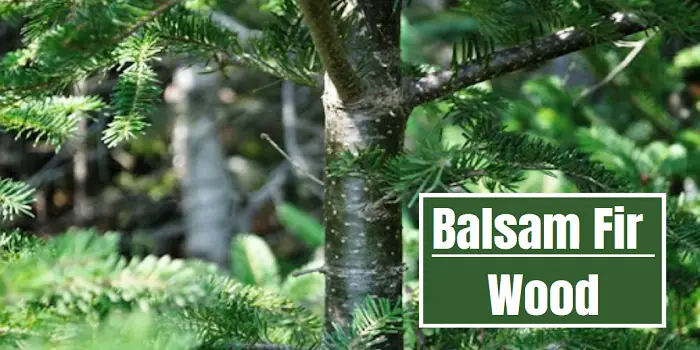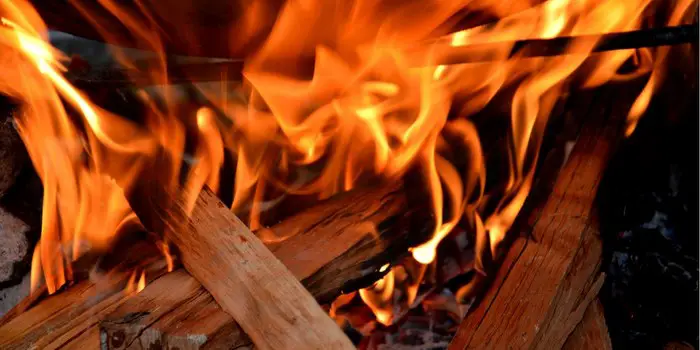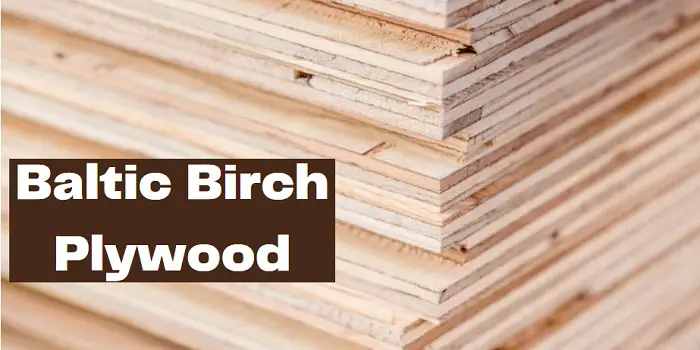
Simply put, Balsam fir wood (derived from Balsam Fir trees) is a lightweight and light color wood that is soft and low in decay resistance.
Although it’s great construction lumber and is used in the making of plywood, it is chiefly utilized in the manufacture of pulp due to its excellent pulping properties.
We’ll In this article discuss more about Balsam trees, what you would use Balsam-Fir wood for, and how it’s different from Douglas Fir.
Balsam Fir Wood
| Scientific Name: | Abies balsamea |
| Tree Size: | 40-65 ft (12-20 m) tall 1-2 ft (.3-.6 m) trunk diameter |
| Janka Hardness: | 400 lbf (1,780 N) |
| Type: | Softwood |
| Odor: | No smell |
| Specific Gravity (Basic, 12% MC): | 0.33, 0.4 |
| Common Uses: | Paper, plywood, and other utility wood purposes |
About Balsam Fir Trees
Balsam Fir refers to two primary varieties of trees that are grown throughout much of Canada and the Northeastern United States. These are the standard Balsam Fir and the Bracted Balsam Fir.
They are small to medium-sized evergreen trees which typically grow to 46-66 feet.
However, the environment will dictate how tall and wide they grow; you’ll often find Balsam Fir in four different environments with varying results on size.
- Swamp areas will produce slower-growing and more slender trees. They can grow tall but require more time to do so.
- Flatlands allow the Balsam Fir to grow quickly and extremely large.
- Sloped areas will produce very large and tall trees that grow quickly.
- Balsam Firs growing on mountain tops will be shorter, and branches may even touch the ground.
The Balsam Fir prefers a cooler environment to grow; around 40 °F is optimal for them.
It is one of the hardest trees in cold conditions, being able to withstand the extreme colds in Canada and other Northern areas.
What is Balsam Fir Wood Used For?
Wood from Balsam Fir has a wide range of uses, including:
1- Framing Lumber
Because Balsam Fir is soft and does not have a strong resistance to decay, it is not usable in all construction areas. However, you can use Balsam Fir for framing and dimensional lumber (such as two-by-fours) in construction projects, and in some cases, for siding.
2- Pulp
Commercially, Balsam Fir is predominantly used for pulp, where it can be used to make paper, tissue, cardboard, and other similar products.
3- Christmas Trees
Balsam Fir is one of the most common trees used as a traditional Christmas tree. These are often grown on plantations with the sole purpose of selling as Christmas trees rather than anything else.
The US White House has even used it eight times as the official Christmas tree.
4- Parks and Gardens
As medium-sized evergreen trees, they make excellent options to include in parks and larger gardens for shade and attract local wildlife for food.
5- Canada Balsam
Resin from the Balsam Fir is turned into Canada Balsam which is traditional cold medicine but is now used commercially as a bonding agent or glue for optical components.
6- Rodent Repellent
Balsam Fir oil is used as part of a bio-friendly rodent repellent. It is non-toxic and does not harm rodents; it simply emits a strong smell that drives rodents away but is not a problem for humans.
7- Air Freshener
Many air fresheners for the home or car use Balsam Fir oil as the scent. Due to the pleasant fragrance, it carries, Balsam Fir provides a strong earthy natural scent that many people enjoy.
8- Camping
Traditionally Balsam Fir trees were an excellent option for making a bed while camping or out in the wild.
They were readily available and easily pliable, and due to the way, they grew and the heavy snow that bent the branches, they made good bedding. The needles were also a good option for adding comfort.
9- Native America and First Nations Medicine
Balsam Fir has been historically used by many Native Americans and First Nations people for medicinal purposes ranging from itch relief, insect bites or other sores, cold remedies, laxatives, and many other ailments.

Is Balsam Fir Good Firewood?
Fir is not the best type of firewood since it burns quickly and throws off sparks while providing moderate heating at around 12 to 21 million BTUs per cord.
Additionally, its high level of resin makes it quite messy; coupled with an abundance of knots that make splitting tough — making this wood a less-than-ideal choice for fires.
That said, in certain locales, conifers like fir are the only types of wood that are available to use as fuel. So in a pinch, it can help kindle or keep you warm.
When selecting firewood, two of the most crucial aspects to consider are the amount of smoke produced and levels of creosote buildup in the chimney.
To ensure minimal impact on these associated risks when using fir wood, proper seasoning and cleaning should be maintained along with awareness of its high sap content leading to an average rate of producing smoke.
Also, to stay safe, it is best to avoid burning Fir in an indoor open fireplace since the logs can crack and emit sparks. However, if you use a log burner with a door and regularly maintain your chimney or flu, there should be no worries when it comes to using Fir as fuel.
What’s the Difference Between Balsam Fir and Douglas Fir?
Typically, Balsam Firs reach heights of 60 feet, while Douglas Firs can reach 250 feet.
While both are very adaptable to their environments, Douglas Firs will live longer and have a more robust root system, making them better adapted to strong winds.
Douglas Fir is a much stronger wood that is more durable and resistant to decay.
As a result, it is heavily used in commercial construction to frame homes and other large projects.
On the other hand, Balsam Fir is better suited for pulp rather than construction, though you can use it in light construction projects if it is more readily available to you.

Hi, I am Mark Garner a professional carpenter, woodworker, and DIY painter. I live in the small city of Peoria, Arizona as a semi-retired woodworker. I have started this blog with a simple motive to help you with my wood experience in this sector. If you like to know more about what I love doing and how it all got started, you can check more about me here.




